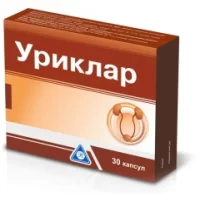$30.30
Manufacturer: Bulgaria
Purpose: Strengthens blood vessel walls, treats chronic venous insufficiency and varicose veins.
Description
Troxevazin (troxerutin) capsules 300 mg. №50
Ingredients
Each capsule contains 300 mg of troxerutin.
Dosage
The recommended dosage is one capsule taken orally three times a day.
Indications
Troxevazin capsules are indicated for the treatment of chronic venous insufficiency, varicose veins, and related symptoms such as pain, heaviness, and swelling in the legs.
Contraindications
Do not use Troxevazin capsules if you are allergic to troxerutin or any other ingredients in the product.
Directions
Take the capsules with water, preferably after meals. Do not exceed the recommended dosage.
Scientific Evidence
Troxerutin, the active ingredient in Troxevazin capsules, has been extensively studied for its efficacy in the treatment of chronic venous insufficiency. Research has shown that troxerutin helps to improve venous tone, reduce capillary permeability, and decrease inflammation in the veins.
A clinical trial published in the Journal of Vascular Research demonstrated that troxerutin significantly improved symptoms of venous insufficiency and reduced leg edema compared to a placebo.
Additional Information
Troxevazin capsules are well-tolerated and have a good safety profile. However, it is always recommended to consult a healthcare professional before starting any new medication, especially if you have underlying health conditions or are taking other medications.
For optimal results, it is advisable to combine the use of Troxevazin capsules with lifestyle modifications such as regular exercise, elevation of the legs, and wearing compression stockings.







Recent Reviews